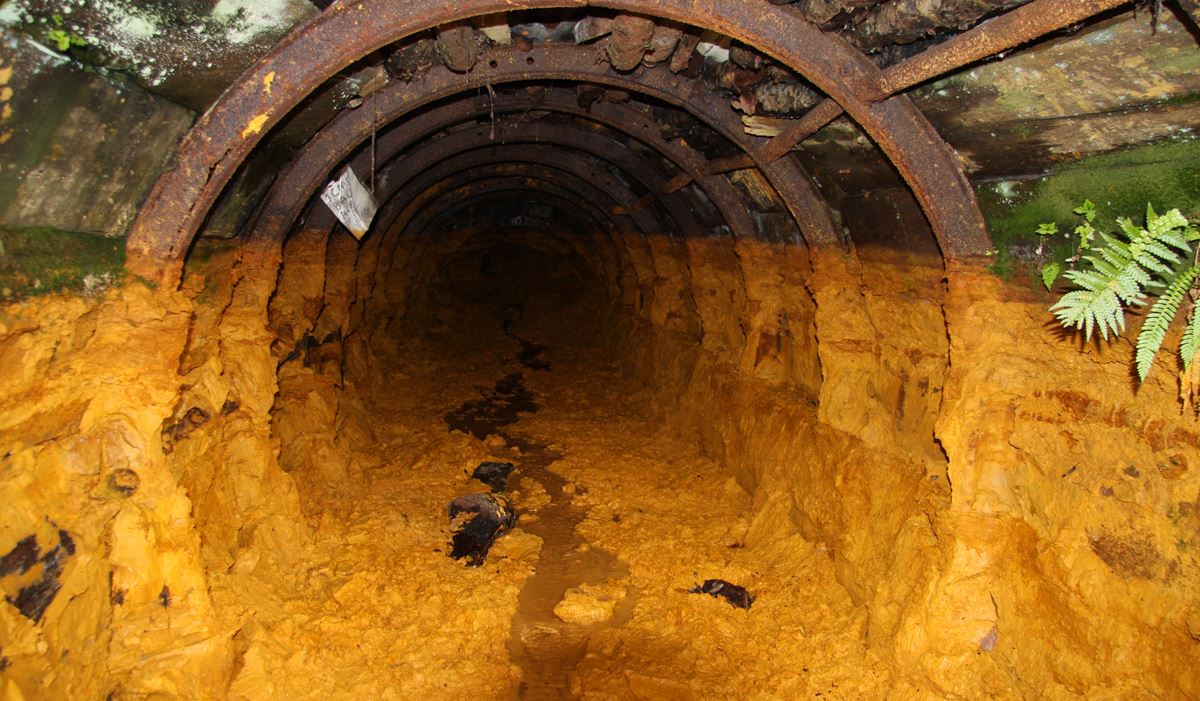Metal mine water pollution
Overview
Pollution from Abandoned Metal Mines
Abandoned metal mines cause extensive pollution in Wales, with approximately 1,300 sites estimated to impact water quality and ecology in over 700 km of watercourses.
Natural Resources Wales (NRW) and the Mining Remediation Authority (formerly Coal Authority) are working together to tackle this pollution, making our rivers cleaner and healthier to benefit people, wildlife and the economy.
Causes of pollution
Wales has a long history of mining metal ores, dating back to the Bronze Age, with the industry reaching a peak in the latter half of the 19th century.
By the 1920s most mining had ceased, and the majority of mines closed and abandoned, but discharges from underground workings and leaching of metals from spoil heaps still present significant sources of water pollution today.
What's the problem?
Abandoned metal mines are a major source of the metals found in our rivers, streams and lakes – metals like cadmium, lead, zinc and copper. Elevated levels of these metals cause significant environmental damage, reducing fish populations and the diversity of invertebrate fauna, making them a high priority for national action to clean-up our rivers.
There are approximately 1,300 abandoned metal mines in Wales that have been estimated to impact over 700km of river reaches.
Abandoned mines are the principal cause of waterbodies in Wales failing to achieve European Water Framework Directive (WFD) standards for chemicals (metals).
What’s been done about it?
The Metal Mine Strategy for Wales , published in 2002, identified the 50 abandoned metal mines believed to be causing the greatest impact to rivers in Wales.
Studies indicated that these 50 mines discharge approximately 200 tonnes of zinc, 32 tonnes of copper, 15 tonnes of lead and 600 kg of cadmium annually. Since then, site-specific investigations have prioritised and progressed remedial interventions at a number of sites, including a major remediation scheme at Frongoch, as well as smaller scale remedial works and pilot treatment trials at Parys Mountain, Cwm Rheidol and Abbey Consols mines.
In 2020, the Failing Waterbodies Assessment Report considered where metal mine impacts were a primary reason for waterbodies failing to achieve Water Framework Directive (WFD) ‘Good’ status and whether or not a status change was possible following remedial interventions.
The report classified mines as either Red, Amber or Green, identifying 129 Red, 140 Amber and 278 Green sites. Red sites are considered highly likely to be contributing significantly to waterbody pollution, Amber sites are subject to a greater degree of uncertainty and more information is needed to determine whether they should be reclassified as Red or Green (insignificant contributors).
What are we doing now?
The Metal (Non-Coal) Mines Programme (or ‘the Programme’) was established in 2020 to continue this work. It is funded by Welsh Government and is being jointly delivered by NRW and MRA. The Programme is one of a number delivering the River Basin Management Plans (RBMPs) in Wales, which are designed to protect and improve the water environment for the benefit of people and wildlife.
The primary objective of the Programme is to achieve cleaner rivers, and in doing so, directly contribute to the sustainable management of natural resources as detailed in the Environment (Wales) Act 2016 and the Well-being of Future Generations (Wales) Act 2015.
We are undertaking a rolling multi-year programme of assessments and surveys of the Red and Amber sites. We will assess sites to identify and quantify sources of pollution, and where appropriate and feasible, undertake design and implementation of intervention works. These may include surface water and spoil management and/or mine water treatment schemes.
In addressing the water quality issues through remedial works, there may also be opportunity for measures to be incorporated that benefit the health and well-being of local communities, local economies and the wider environment, including the climate and bio-diversity crises and preservation/promotion of cultural heritage.
The Programme also invests in research projects exploring innovative treatment solutions, including working with academia and industry experts on treatment trials at laboratory and pilot field scale.
We are currently developing remedial strategies at our highest priority sites and where projects are sufficiently developed, are constructing intervention works ‘on the ground’.
Who else will be involved?
We are working closely with other stakeholders including Welsh Government, universities, local authorities, landowners and mining enthusiasts, and continue to identify innovative solutions and seek support to deliver these at priority sites. We’ll also be talking to local communities and businesses to get their ideas and input into potential schemes.
Our projects
Related document downloads
Areas
- All Areas
Audiences
- Metal mines
Interests
- Metal mines


Share
Share on Twitter Share on Facebook